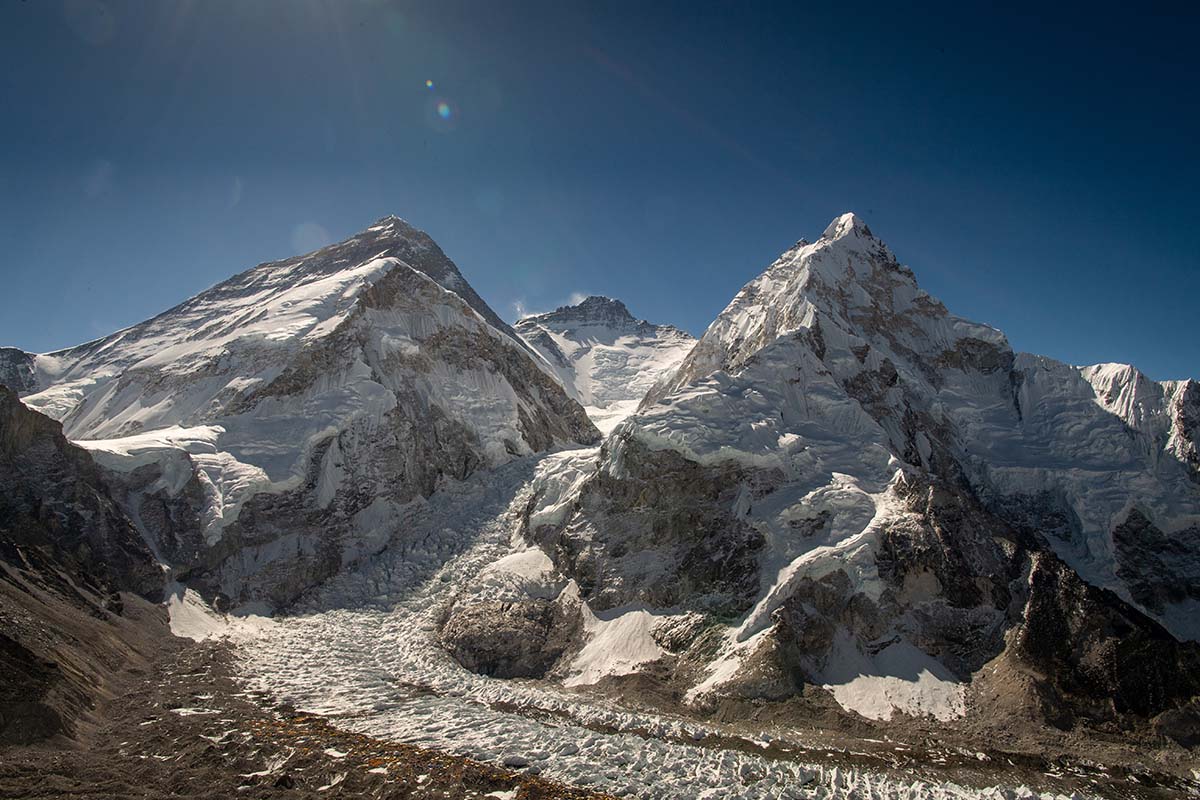Projekt Beschreibung
17 April– 28 May 2026
17 April– 28 May 2027
42 Days
€ 73.500,-
About the mountain
Mount Everest is the tallest mountain in the world, standing at 8,848m (29,029ft), with its summit being the international border between China and Nepal.
The mountain was named after Sir George Everest, who was a Welsh surveyor and geographer, and the Surveyor General of India from 1830 to 1843. It was in fact his successor, Andrew Scott Waugh, who decided to name the peak “Everest” despite objection from George Everest himself. Waugh’s argument was that due to the number of different local names for the mountain, including “Deodungha” (“Holy Mountain”) and “Chomolungma”, it would be impossible to settle on one of these names, and so Everest ended up sticking.
The first summit of Everest was achieved on 29th May 1953 by Sir Edmund Hilary and his Sherpa Tenzing Norgay, who were part of the 9th British expedition to attempt the mountain, led by John Hunt.
Being the tallest mountain in the world, Everest naturally attracts more climbers each year than any other 8,000er, with over 3,500 people having summited to date, making it by the far the most climbed. It is of course not without its risks just because of this large number, and it must be remembered this is not an easy undertaking by any means, with many tragic stories going alongside all the successes.

Climbing the mountain
Himex used to run expeditions from the North side of the mountain, however due to the unreliability of access through Tibet, the last few years have seen us run the trips from the South with huge success, not only because all of our Sherpa staff actually come from the Khumbu region, just a few day’s walk from basecamp.
The trip is organised over 70 days from the end of March until early June, using 4 high camps as well as our basecamp setup.
The traditional Everest basecamp is a crowded place and sits on active ice which moves and melts around the tents during the course of the expedition, so Himex will camp slightly further down the valley closer to Pumori where there is more sun and the ice does not move – this makes for a much more comfortable experience and place to call home.
Due to the unstable nature of the Kumbu Icefall, Himex intends to minimise the amount of time members and Sherpas spend here, so we will spend more time on Lobuche and the surrounding peaks during acclimatisation.
We will place an emergency tent and equipment at camp 1 at the top of the ice fall, however this camp has an inherent avalanche danger so members are encouraged not to stay here.
Our first trip into the Western Cwm will therefore be directly to camp 2 (6,400m) where we will spend two nights before continuing up to camp 3 (7,200m) on the Lhotse face. Here we spend one night acclimatising before heading down to camp 2 for another night, before returning down to basecamp.
The summit push is of course weather dependent, but will take place over 7 consecutive days from Basecamp, with a brief stop at camp 4 at around 7,950m on the way up.